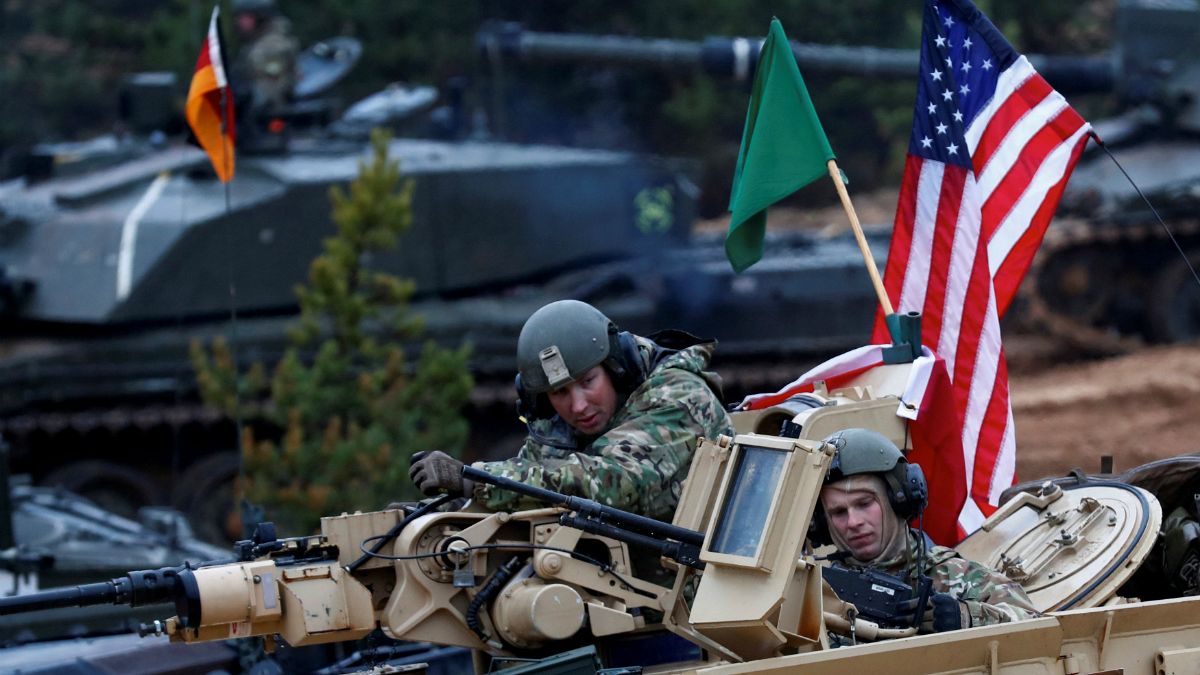The exercises stretching from the Baltic Sea to Iceland are designed to test NATO’s response to an attack on Norway.
NATO has launched its biggest military exercise since the end of the Cold War nearly three decades ago.
Trident Juncture 18, as the operation has been called, will test the response of the North Atlantic alliance to a mock attack on Norway.
Over two weeks, drills will stretch from the Baltic Sea to Iceland – with some of the action taking place close to Russia, which itself held a huge military drill last month.
They come amid heightened tension between Russia and the West – and questions over unity in the wake of criticism of NATO by US President Donald Trump.
Why is this happening now?
The original decision to conduct a series of high-profile military exercises, of which Trident Juncture 18 is the latest, came at a NATO summit in 2014.
Western leaders were increasingly concerned about Russian involvement in Ukraine, and its annexation of Crimea earlier in the year.
Since then, tensions between NATO and Russia have increased, amid additional alarm at Moscow’s backing for Syria’s government in the country’s civil war, and alleged interference in Western elections.
“In recent years Europe’s security environment has significantly deteriorated. NATO has responded with the biggest adaptation of our collective defence since the end of the Cold War. Trident Juncture demonstrates that adaptation,” NATO Secretary-General Jens Stoltenberg has said.
Why is it taking place in Norway?
Following the 2014 summit, Norway offered to host the 2018 drills, which NATO accepted.
Like the Baltic states, the country has become increasingly nervous over Russia’s intentions – although it has described the danger of war with Moscow as “low”.
Norway shares a 200-kilometre border in the Arctic with Russia, and has beefed up its military capabilities in the region. Earlier this year Norway’s navy chief warned that Moscow had increased its naval activity in international waters nearby.
Since the annexation of Crimea, Norway has sought to double the number of US marines receiving training on its soil every year.
What does Trident Juncture involve?
Some 50,000 personnel, 250 aircraft, 65 ships and as many as 10,000 land vehicles have been descending on Norway and the surrounding areas as part of the Trident Juncture exercise.
Military forces from 31 countries are taking part, representing NATO’s 29 members as well as Finland and Sweden.
Land exercises will occur in central Norway, maritime operations in the North Atlantic and Baltic Sea, and air exercises in airspace over Norway, Sweden and Finland.
NATO war games were originally meant to involve 35,000 troops, but the number grew in recent months.
An American aircraft carrier, the USS Harry S. Truman, was added at a late stage, involving some 6,000 personnel. It has become the first US aircraft carrier to enter the Arctic Circle since before the collapse of the Soviet Union in 1991.
The forces involved are greater than the 40,000 personnel who took part in NATO’s Strong Resolve exercise in Poland in 2002.
How significant are the war games?
NATO has been striving to reassure member states bordering Russia that the alliance will defend them against Russian aggression.
“The scenario is fictitious, but the lessons we learn will be real,” says Stoltenberg.
The exercises come against a backdrop of confusing signals from the Trump administration. The US president has stressed his attempts to keep warm relations with Russian President Vladimir Putin, while accusing NATO allies of failing to pay their way.
However, the US military remains at the helm of NATO operations, and US Defence Secretary James Mattis reassured European allies of America’s “iron-clad” commitment to NATO earlier this month.
In September Russia held its biggest manoeuvres since 1981, mobilising 300,000 troops in a show of strength close to China’s border.
The Russian foreign ministry has condemned the NATO drills as “sabre-rattling” and vowed that Moscow will retaliate. The Russian embassy in Oslo has described Trident Juncture as “anti-Russian”.
A solid majority of Norwegians support NATO membership, however some on the left – who oppose their country’s involvement – have said the exercises will increase tensions with Russia.
